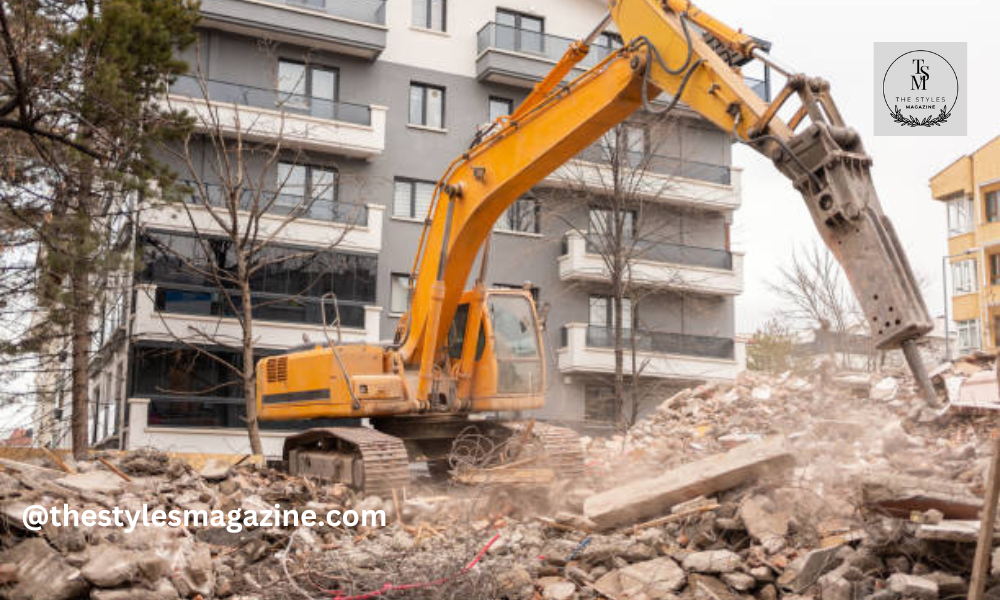Demolition isn’t just about knocking things down—it’s about clearing the way for progress with control, care, and purpose. While construction and design often steal the spotlight, it’s the unsung work of specialized demolition that makes those glossy finish lines possible. And increasingly, that work is being powered by innovative tools designed not only to speed up the process but to make it safer, cleaner, and smarter.
Whether you’re removing concrete around a manhole cover or gutting an outdated kitchen, the tools used can make or break the workflow. On one end of the spectrum, advanced systems for street-level utility repairs, like those from the https://mrmanhole.com/ website, are changing how infrastructure maintenance is done with near-surgical precision.
Controlled Chaos: The Shift In Residential Interior Demo
Inside the home, precision matters just as much. Residential demolition used to mean sledgehammers and dust clouds, but today’s approach is more refined. Walls are removed selectively, plumbing and electrical components are handled with care, and floors are pulled up without jeopardizing the foundation below. This shift is not just about aesthetics or convenience—it’s about setting up future renovations for success.
Modern demolition contractors are embracing specialized workflows to tackle interior spaces quickly while keeping structural integrity intact. Companies focusing on interior demolition have moved far beyond “swing and smash.” They now rely on industry-grade saws, vacuums, and dustless systems that reduce contamination and increase efficiency. One such company, showcased through the www.rosecityhomedemo.com website, exemplifies this new standard by offering precise, systematic interior demolition services aimed at making renovation projects smoother from start to finish.
Above And Below: Two Very Different Worlds, One Common Goal
At first glance, you might not think street-level manhole repair and residential interior demo have much in common. One deals with roadways and municipal infrastructure, the other with drywall and kitchen tile. But look deeper, and you’ll find they share a critical thread: both require methods that reduce disruption, increase accuracy, and set the stage for better construction.
Take street repairs. Traditionally, removing and replacing a manhole cover was a drawn-out, messy process—digging, chiseling, pouring concrete. The collateral damage could be considerable. But innovations like round-cutting systems not only preserve the surrounding asphalt but also create a longer-lasting bond when the repair is completed. The technology doesn’t just fix—it prevents future problems.
Now pivot to a bathroom demo. Precision cuts allow renovators to retain adjacent walls or structural supports, saving time and money down the line. Plumbing access is maintained, studs remain intact, and new materials have a clean base for installation. In both scenarios, the key isn’t just removal—it’s intelligent removal.
Tools That Do More Than Tear Down
What defines the new era of demolition is the technology. On the infrastructure side, proprietary cutter systems paired with leveling devices can eliminate the need for guesswork. These tools aren’t just efficient—they’re engineered for consistency. The circular cutting systems used in manhole rehabilitation, for example, ensure that the surface is flush with the road every single time, extending the lifespan of the repair and making roads safer for vehicles.
Inside homes, the tools are equally specific. Vacuum-assisted drywall removers, floor scrapers with variable blade settings, and oscillating multi-tools have become the norm. These aren’t off-the-shelf gadgets from your neighborhood hardware store—they’re professional-grade instruments tailored for specific tasks. Their precision reduces waste, shortens job timelines, and, most importantly, keeps homeowners and workers safe.
The real evolution, though, is in how these tools integrate with broader workflows. Crews no longer improvise their way through demo jobs. They follow carefully mapped plans and use digital tools to measure, track, and report progress, bringing a level of accountability that once felt foreign to demolition.
Safer Sites, Smarter Schedules
There’s also a growing emphasis on safety, and for good reason. Demolition jobs, whether on the street or inside a house, are some of the most physically risky in the construction world. Falling debris, sharp edges, and structural surprises are always lurking.
But specialized tools have drastically reduced these risks. Hydraulic equipment absorbs much of the shock once transferred to the operator. Air-filtration and dust-reduction systems keep breathing zones cleaner. And with tasks that used to require teams of three or four now being accomplished by two people in half the time, exposure to jobsite hazards has gone down significantly.
Even scheduling has evolved. Because these precision tools allow for more predictable performance, timelines can be tighter without risking quality. Whether coordinating with road crews or flooring installers, stakeholders can now operate with clearer expectations and fewer delays.
The Road Ahead For Renovation Demolition
It’s easy to overlook the demolition phase as just the “before picture” in a home improvement project or infrastructure overhaul. But those early stages set the tone for everything that follows. Poor cuts, structural damage, or uneven surfaces can turn even the most exciting renovation into a headache.
Thankfully, demolition is no longer a blunt instrument. It’s a refined process, powered by smarter tools and more thoughtful approaches. Whether you’re resurfacing a city street or clearing space for a brand-new kitchen, the right tools don’t just remove the old—they lay the groundwork for the new.
With the rise of companies focused on innovation in both residential and infrastructure spaces, we’re witnessing a quiet revolution. And while their work may get buried beneath layers of tile or pavement, it’s their precision, planning, and tech-savvy approach that make the final results possible.
Thank you for exploring our Blog! For additional captivating content, feel free to explore the corresponding category.
Harpo Marx Owned The Riviera Hotel: A Glimpse Into His Role And The Hotel’s Legacy

